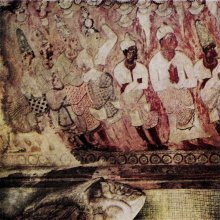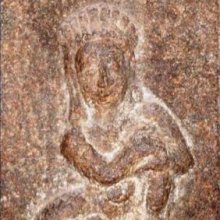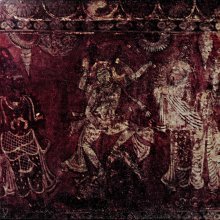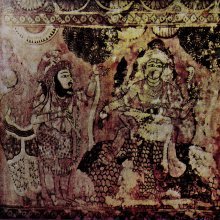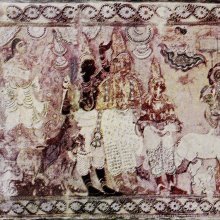Lepakshi, Lepākṣī: 1 definition
Introduction:
Lepakshi means something in the history of ancient India. If you want to know the exact meaning, history, etymology or English translation of this term then check out the descriptions on this page. Add your comment or reference to a book if you want to contribute to this summary article.
Images (photo gallery)
(+8 more images available)
India history and geography
Source: archive.org: Vijayanagara PaintingsLepākṣī (लेपाक्षी) is the name of an ancient city in Anantapur district.—At Lepākṣī, there is a temple of considerable importance, with a whole series of paintings giving the best report on Vijayanagara paintings in the sixteenth century. Though now an insignificant spot, it was once a great centre of trade. Pilgrims flooded here to visit the temple of Vīrabhadra that was famous in the days of the Vijayanagara monarchs at Lepākṣī. This temple was built by Vīrupaṇṇa Nāyaka and Vīraṇṇa who on behalf of the emperors ruled the area.

The history of India traces the identification of countries, villages, towns and other regions of India, as well as mythology, zoology, royal dynasties, rulers, tribes, local festivities and traditions and regional languages. Ancient India enjoyed religious freedom and encourages the path of Dharma, a concept common to Buddhism, Hinduism, and Jainism.
See also (Relevant definitions)
Full-text: Virabhadra.
Relevant text
Search found 1 books and stories containing Lepakshi, Lepākṣī, Lepaksi; (plurals include: Lepakshis, Lepākṣīs, Lepaksis). You can also click to the full overview containing English textual excerpts. Below are direct links for the most relevant articles:
Andhra Sculpture < [January 1949]
Renaissance and Reformation of Art < [October - December 1972]
Fact and Fiction in Historical Biographies < [January – March, 1980]
Related products

